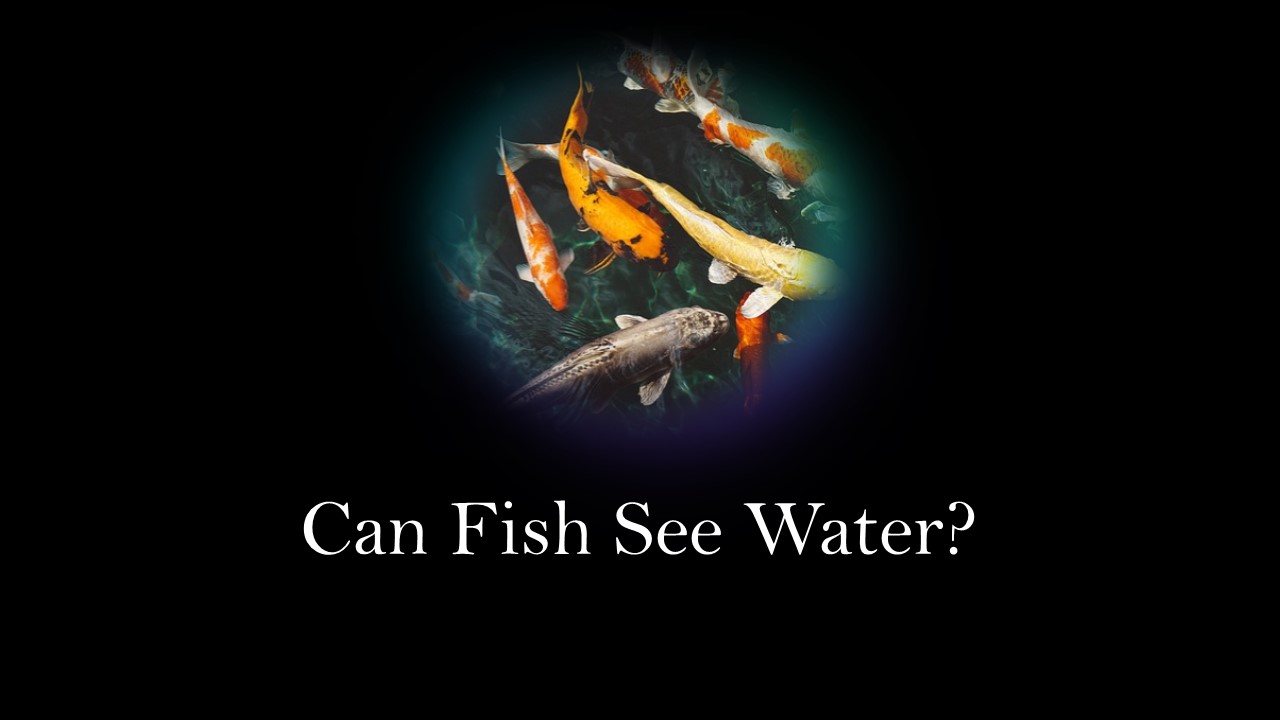Physical Address
304 North Cardinal St.
Dorchester Center, MA 02124
Physical Address
304 North Cardinal St.
Dorchester Center, MA 02124


No, fish can’t see the water surrounding them. The water that surrounds fish is invisible to them. Fish see the water where they live the same way we perceive the air that we breathe. Simply put, their brain ignores the sight of water to make place for more crucial functions. The fish are surrounded by plenty of water, so their brains would quickly exhaust their processing power if they concentrated on all the different elements of water. For them, it is essential to solely focus the brain’s attention on the inputs that are necessary for survival.
The way a fish’s brain filters information is quite amazing.
Every creature on earth has eyes that see colors and objects in their own unique ways. Everything reflects light differently, which affects how humans and all the different animals perceive it. The term for this is the refraction index. For us, it is impossible to see the air due to its incredibly low refraction index. In the same way, water has a very low refraction index for fish making it impossible for them to see it.
Another question many people ask and maybe you are asking too is if fish can see color.
Yes, fish can see color and, in many cases, fish color vision is probably comparable to that of humans. Fish retinas, like those of humans, have both cones for color vision and rods for black-and-white vision. Fish use their cone eyes predominantly during the day. The rods, which offer significantly higher light sensitivity and resolution, are utilized at night instead.
Water depth is a crucial element in fish color vision. At various depths, water entirely absorbs (or attenuates) various wavelengths of light, affecting which colors are visible to fish. Red light from the spectrum is attenuated by water first, followed by orange and yellow light, and then blue and green light (see the chart below). This means that a red lure will no longer look red at a certain depth, but instead may appear as black or brown, whilst a green bait at the same depth may still look green.
Fish likely perceive objects in a range of grayscale tones at even deeper depths where colors are no longer visible. Therefore, it is not surprising that shallow-dwelling species of fish have more advanced color vision than deeper fishes, both in freshwater and saltwater. The depth at which a specific hue is seen is, of course, significantly reduced by water turbidity that prevents light from passing through.
Fish eyes resemble terrestrial vertebrate eyes, such as those of birds and mammals, but have a larger spherical lens. Fish normally modify focus by moving the lens closer to or away from the retina, in contrast to birds and mammals, including humans, who often change the shape of their lenses.
As I mentioned above most fish species have color vision, and fish retinas typically contain both rod cells and cone cells. Fish vary in their sensitivity to polarized light and their ability to see UV.
Despite the fact that red is the first color to disappear from the underwater spectrum, some research has shown that red elicits the strongest response from the largemouth bass. Yellow was the next most important color for this species. Other research has suggested that largemouth bass also possess some of the better color vision among common sport fishes, followed by smallmouth bass, muskie, northern pike, rainbow trout, bluegill, crappie, and gar. Fish that feed primarily by smell, such as catfishes, may have poor color vision in comparison.
Fish see both rod cells and cone cells, which are responsible for scotopic and photopic vision, and are often present in a fish’s retina. Fish of most species can see color. Some species can perceive ultraviolet light, whereas others are sensitive to polarized light.
You also might be asking what fish see when they look at humans. A familiar human face can be distinguished from dozens of unfamiliar faces by a fish with amazing accuracy, according to researchers examining archerfish. This is quite important. Fish have never before shown this talent.
Evolutionary change and advancement over many years have led that water is invisible to fish. Fish are unable to see water, just as people are unable to see the air. Fish filter out the water because its brain is constantly filtering the water. It is crucial for fish to limit the brain’s inputs to those that are required for survival.
Here are other great related articles for you: